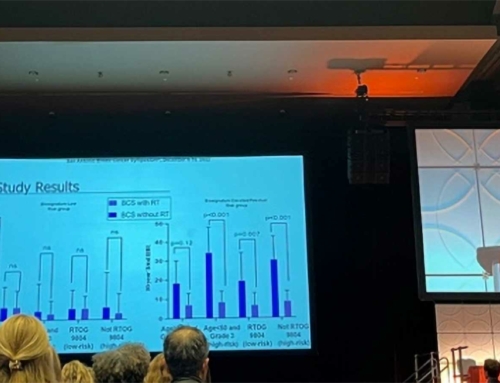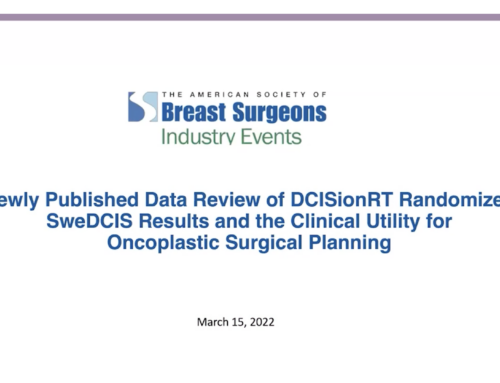Leading Physicians Discuss the Role of DCISionRT® in Treatment Decision Making and Oncoplastic Surgical Planning
David Dabbs, MD; Juliann Reiland, MD, FACS; and Anne Peled, MD provide an overview of the clinical utility of PreludeDx’s DCISionRT to determine which ductal carcinoma in situ (DCIS) patients will benefit from radiation therapy (RT) following breast conserving surgery (BCS) and the role of oncoplastic surgery in breast conservation.
DCISionRT is an important tool to clarify, and hopefully simplify, the decision-making process pre-operatively for the breast surgeon and the patient in regards to surgical decision-making. DCISionRT also facilitates more informed pre-operative conversations with the radiation oncologist by providing personalized information on prognosis and RT benefit.
Post-operatively, DCISionRT can be used to determine the patient’s benefit of adjuvant radiation therapy, guide re-excision discussions and identify overall risk.
What happens to the biopsy sample?
When a tissue block sample arrives in a pathology lab, the tissue block is cut and pathologists look at histologic sections to determine the grade of the tumor, the size of the lesion in combination with other reports, and examine the margin status.
Traditional clinpath categories alone, such as tumor size and grade, are not reliable indicators of radiation therapy benefit and/or recurrence risk. A genomics test is needed to provide a complete picture.
What role does DCISionRT play in decision-making?
DCISionRT is a next generation DCIS test that is powered by non-linear AI algorithms. DCISionRT is the only test to assess seven DCIS critical pathways including PR, HER 2, FOXAI, Ki-67, COX-2, p16 and SIAH2. Its algorithm combines biology and clinpath to individualize patient risk. DCISionRT scores patients on a continuous risk from 0 to 10, with scores less than 3 classified as lower risk and 3 and above as elevated risk. The test has consistently predicted a no to minimal radiation therapy benefit for the low-risk group and a substantial 9 – 15% absolute invasive risk reduction from radiation therapy in the elevated risk group. A 50% reclassification of patients has been observed in multiple studies with 42% – 49% of 9804-like patients upstaged to elevated risk.
How Does DCISionRT Aid with Oncoplastics?
Oncoplastics allows the breast surgeon to maintain the integrity of the breast shape and form. The surgeon will identify the tumor bed with surgical markers and plan the surgery with and without the need for radiation. Knowing a patient’s DCISionRT score prior to surgery helps the oncoplastic surgeon to know if the patient will undergo radiation or not and helps him/her plan for any symmetry procedure.
When DCISionRT is low risk, patients are likely to forego RT, resulting in the ability to achieve best symmetry at initial surgery and the patient may require no surgery of the contralateral breast for equalization.
When DCISionRT is high risk, the patient is likely to undergo radiation therapy. With contralateral symmetry in mind, the surgeon can account for radiation causing about a 10% reduction in size of the breast.
Genomics are a key part of the breast surgeon’s ability to offer personalized breast cancer care to treat appropriately without causing unnecessary side effects and optimize aesthetic and functional outcomes. Breast cancer surgeons are often the first point of contact for breast cancer patients and a trusted source for guidance on overall care. DCISionRT can provide valuable information and play an important role in the shared decision-making process.
For more information on the clinical utility of DCISionRT for oncoplastic surgical planning in patients with DCIS click https://preludedx.com/webinar.






